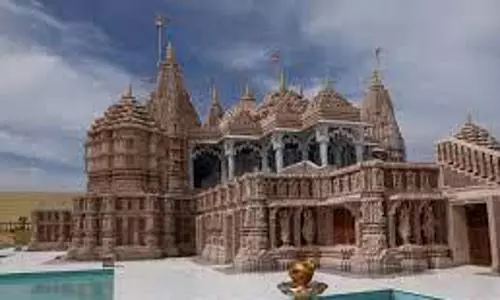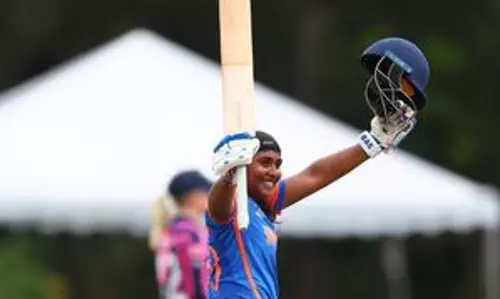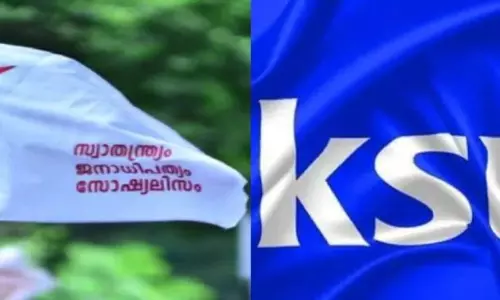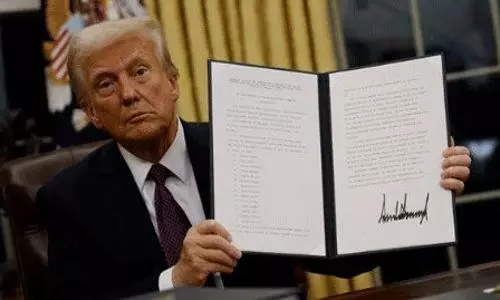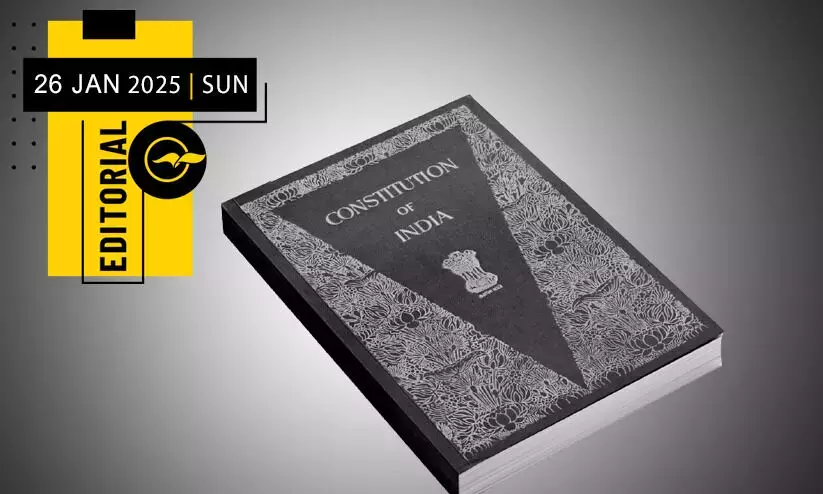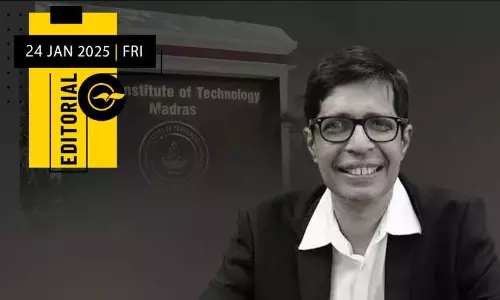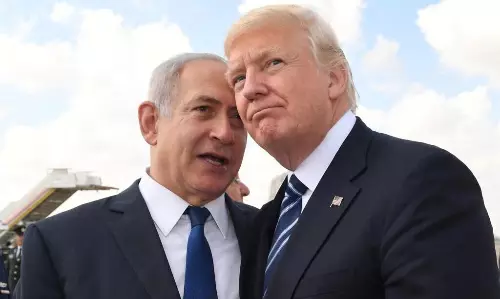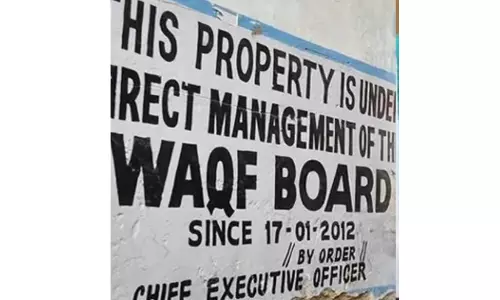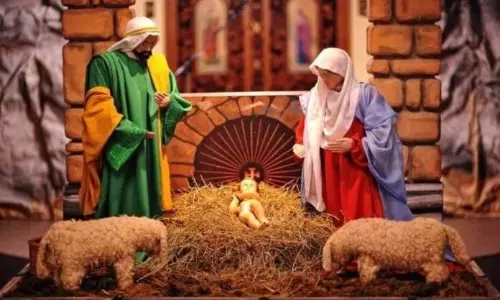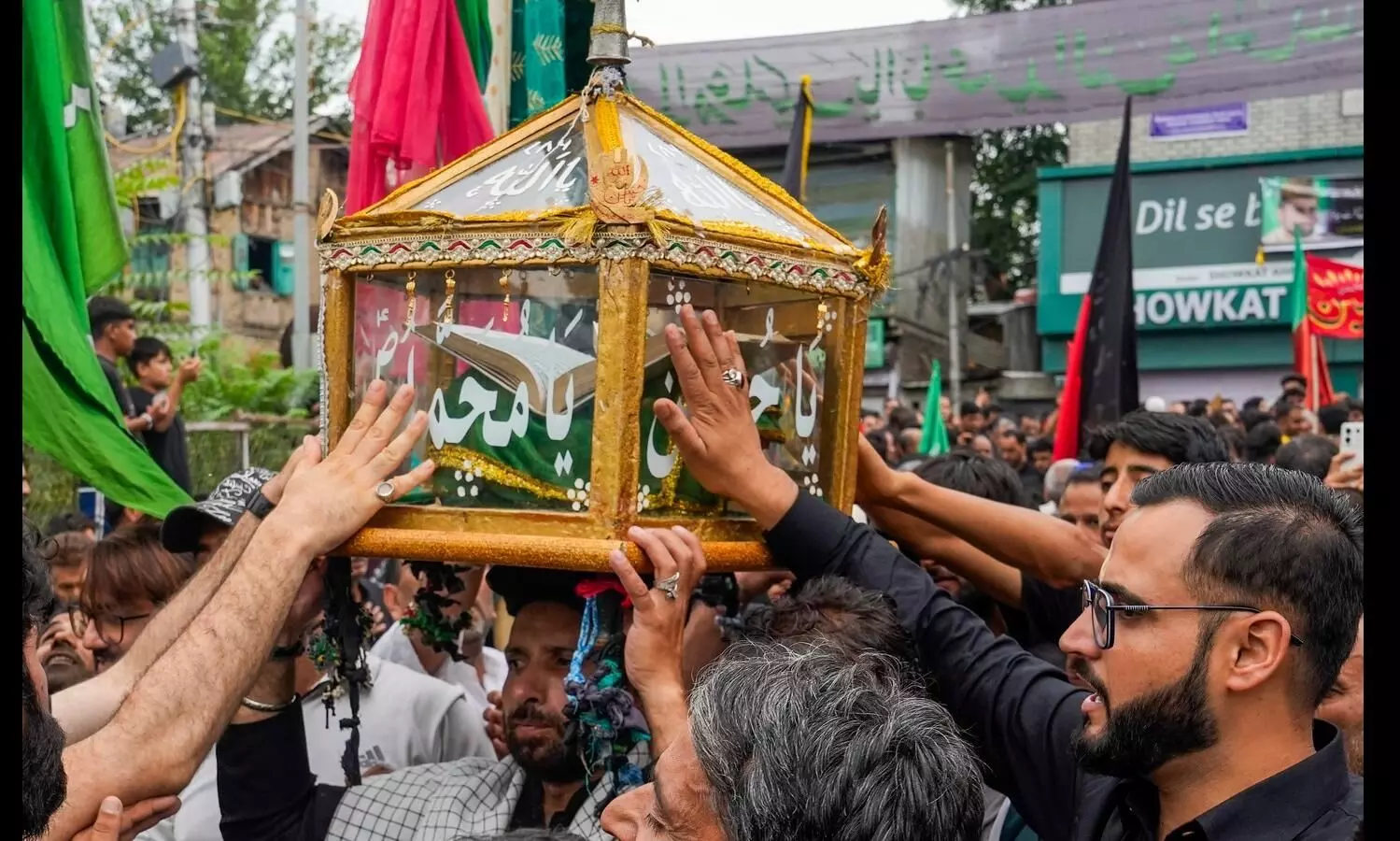
Muharram in Kashmir: A quiet reflection on tradition and resistance
text_fieldsFlags hurled across with slogans engraved, blood donation camps, homemade cool drinks along the roadside, and mourners undertaking processions are some of the major sights one can see during the days of Muharram in Kashmir. Apart from these visible acts of benevolence and remembrance, Kashmiris follow a longer preparation period, try to restrain from desires and impulses while undertaking the significant 10-day processions, and engage in self-purgation and prayers that continue for 40 days.
For Shia Muslims around the world, Muharram is a time of mourning the injustice of the Battle of Karbala, which is in present-day Iraq and expressing a transcended connection with Husayn Ibn Ali al-Hussein, the grandson of Prophet Muhammad. During this period, the Shia community holds Majlis (gatherings) and Jaloos (processions) across different parts of Kashmir, remembering the history of Karbala and mourning the deceitful death of Ahlul Bayt (the family of Prophet Muhammad, including his daughter Fatima, son-in-law Ali, and their two sons Hassan and Hussayn).
Serving water from traditional stoups adorned with Kashmiri art and pouring water while walking barefoot during processions are acts of remembrance of the events at Karbala when Hussain and his family were tortured and denied access to water for days. Families around the Majlis and Masjids also offer large feasts that anyone can join for food and drinks during these days.
All these acts emphasize remembering the past, not forgetting the unjust and inhumane incidents, and representing rightful deeds. It is a month of benevolence, mourning, a call for unity, and standing against injustice—a period to mourn wrongdoings and do what is right over the unjust.
An elderly man is seen serving water from the traditional water container during the 7th day of Muharram processions in Badamwari, Srinagar/2024.
Zainab, who was married off from Pakistan to Kashmir, explains the injustice at Karbala. She was participating in the 8th day of Muharram processions that took place from Abi Guzar to Dalgate in Srinagar. Zainab says that these huge gatherings, where people come to the streets and announce the names of Hassan and Hussain, send a message to the world that what happened to the family of the Prophet Muhammad should not happen to anyone, anywhere. “Yazid’s army had 30,000 soldiers; on the other side, it was Hussain and his 72 companions. That itself is not fair. Hussain’s political stand against tyranny and his decision not to side with the oppressor or support tyrannical rule is a reminder to ourselves and the Ummah,” she says.
Most Kashmiris relate the injustice and wrongful murder of the family of Prophet Muhammad with their own struggle against the Indian administration and border conflicts. For them, Muharram not only recalls the gruesome incidents at Karbala but also translates into a current call to stand upright for truth and justice. “By observing these days, we are also sending a message against tyranny and calling out the oppression and injustice of our own time,” Zainab adds.
The Marsiyas of women and the tomb of Mir Shamsuddin Iraqi
The Majlis (council) of women inside the Mir Shamsuddin Iraqi community engage in dirges called Marsiya while narrating Hussain's death and the events at Karbala. A space separated from the larger area is for the women, where they can touch the tomb of Mir Shamsuddin Iraqi and seek blessings. Mir Shamsuddin Iraqi was an Iranian Sufi saint who came to Kashmir with Shia scholars and disseminated the tenets of Shiism. He is also one of the Twelvers of the order of Shiism. Near his tomb, women and young girls offer mass requiems on the martyrdom of Husain Ibn Ali, often following the one who leads. The requiems have a definite rhythm, tone, and intonation, which the group carries along uniformly.
The tenets of Shiism are interconnected with Sufism, and music has often been a notable means for their transmission. Since the onset of Suffiyat in Kashmir, Sufi saints addressed as the ‘Khurazzan’, enabled the Sufi order mostly through music. The region known as the Khurazzan belt was highly influenced by Sufism. The Sufi saints continue to spread the tenets of Islam, and documenting them through songs has become a common form of communication.
An elderly woman seeking blessings at the tomb of Mir Shamsuddin Iraqi on the 10th day of Muharram in Zadibal, Srinagar/2024.
One of the women inside the Zadibal Imambada explains that after the heinous killing of Imam Husain and all other men, the women of the Prophet’s family were the only ones left at Karbala, later taken hostage and sent to Yazid’s court. The Majlis of women commune inside the Imambada or Mir Shamsuddin Iraqi, participating in mourning the unforgettable events at Karbala. Often, this is led by one woman who narrates and laments while others mourn and beat their chests. In definite intervals, this is followed by Marsiya, a form of elegy focusing on the incidents from the perspective of the women at Karbala.
The women of Ahlul Bayt (the family of Prophet Muhammad), including the daughters of Ali Ibn Talib and Imam Al Hussein, had a significant role in the history of Karbala and its aftermath. Fatima Binth al-Hussein's powerful eulogy, delivered after the death of her father, Imam Hussein, revealed the truths of the events at Karbala, the injustice, and deception against him and his family. It is said that people began to cry after listening to her words.
The Marsiya performed by women on the day of Ashura or the 10th day of Muharram is an allegory narrated to commemorate this. The Marsiya has a different rhythm, intonation, and definite pauses accommodated by chironomid. The women who lead this often stand or sit in an elevated position.
The Jaloos and unique boat processions along Dal Lake
The Boat procession along the interiors of Dal Lake is held on the 9th day of Muharram. Boats carrying mourners raise slogans hailing the names of Husain Ibn Ali and Ali Ibn Talib, the grandson and son-in-law of Prophet Muhammad, respectively. The slogans also call for solidarity with Palestine and condemn America and Israel for their role in the ongoing genocide in Gaza.
The Jaloos or processions prominently feature Nohas, which, like Marsiya, are elegies on the martyrdom of Husain. Besides the dirge, Nohas involve beating the chest, unlike Marsiya. Kashmiri Nohas have a definite number of beats, the fall and rise of the rhythm, pace, and amplification. The beating of the chest also rises and falls accordingly in fixed numbers, balancing out the sublime transient state of mind during these processions and dirges. These take place in intervals during the processions, mostly after walking for a distance and arriving at the destination.
The boat processions along the interiors of Dal Lake on the 9th day of Muharram in Mandibal, Srinagar/2024.
These processions begin in smaller numbers and are limited to stipulated areas. The last three days of Muharram encompass the larger and longer routes of processions. The 7th day of Jaloos takes place in Rainawari, starting from Badamwari and ending near the Gurudwara. For years, the representatives of the Sikh community have offered their greetings while the processions moved towards the Gurudwara. The 9th day of Muharram processions and Majlis lasts until 3 am with different kinds of Jaloos. One of the mourners explained that the processions carrying the Quran are called Taziya. Women also have separate Jaloos on this day after the boat processions, which the men usually carry. They engage in Nohas and Marsiya during these processions as well.
The 10th day of Muharram often witnesses a higher form of mourning and dedication, which involves beating the chest and head until there is blood. However, this practice is not mandatory; very few are often seen undertaking it. On the same day, the processions take place around Zadibal, including welcoming and leading the black horse, representing the horse of Hussain Ibn Ali. The procession, commonly called Zuljanah (horse with two wings), symbolizes the sacrifice of defending its master and succumbing to death at the Battle of Karbala.
Surveillance and crackdown against Muharram processions
Major Muharram processions, especially the 10th day or Ashura in Kashmir, have been banned since the 1990s. These processions have always been subject to heavy surveillance and restrictions, limited to smaller regions of Budgam and Baramullah but banned in traditional routes in Srinagar. Roads and transportation remain blocked during the processions. In 2020, mourners on the day of Ashura, one of the most significant days of the procession, were sprayed with tear gas and hit by pellet guns.
The insurgency during the 1990s, Friday protests against the Indian administration, stone-pelting in 2014, and pellet attacks in 2016 and thereafter have all contributed to the ban on processions to prevent anti-India protests.
In 2020, several individuals were detained for carrying out processions by the Indian forces, and pellet guns were used to disperse gatherings. In 2023, the ban on the 8th Muharram processions was finally lifted, allowing them to be held on the traditional route. The order was welcomed by many Shia leaders and attended by thousands.
This year, the gatherings embarked on anti-Israel and pro-Palestine slogans and showed solidarity with Palestine. After the 8th Muharram, officials issued a notice prohibiting the raising of Palestinian flags. On the 9th day of Muharram, no Palestinian flags were seen in any region—however, Shia mourners raised Palestinian flags.




